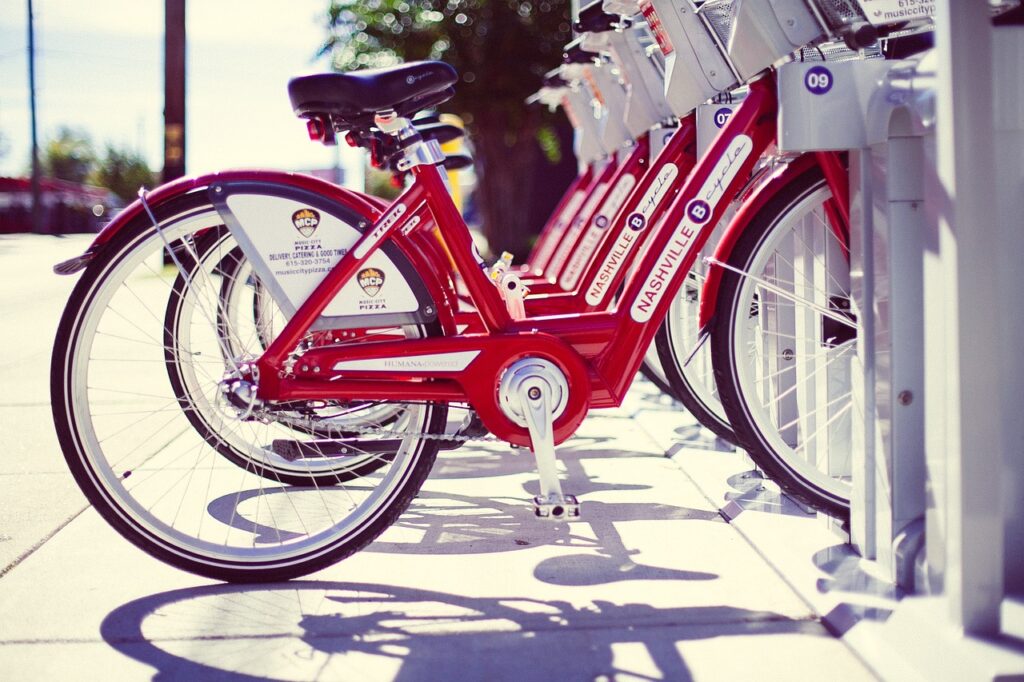
Nine Ways to Go Green at Your Next Event
A growing global awareness of environmental concerns has encouraged many industries to realign business practices according to greener values. This holds true for event management, which when done sustainably can help the environment, as well as improve an organization’s reputation, cost efficiency and long-term success.
According to a study published in Nature Communications, the global events industry accounts for more than 10% of global CO2 emissions annually. And, another study found that events contribute 2.5 pounds of landfill waste per person per day. These findings demonstrate why 80 percent of meeting professionals consider green initiatives when planning events.
Sustainability is Good for Business
One in three U.S. adults say they spend more time thinking about the climate than they did before the pandemic; and 68% of highly empowered consumers report choosing brands that reduce their environmental impact, according to Forrester research.
Choosing greener practices not only engages these audiences, it can also reduce the costs of energy, water and waste management. And the good news is event planners can start small. It’s not necessary to reimagine and reorganize an entire event to have a positive impact.
Below, we offer nine ways event organizers can incorporate more sustainable practices into event planning, while motivating partners and attendees to pass it on.

1. Host Virtual, Hybrid or a Series of Satellite Events
Research by MeetGreen shows that air travel by attendees, speakers or sponsors accounts for 70% of an event’s carbon footprint. Meaning, reducing travel is one of the easiest and most significant ways to make a large environmental impact.
If the content allows, make the event virtual, or create hybrid options to limit the need for people to travel. Researchers from the University of Cambridge found that hybrid conferences combined with the promotion of land-bound travel “could be a feasible compromise to reduce emissions by almost 90%.”
If in-person is necessary and resources allow, organizers might also consider hosting several satellite events in convenient locations across states or countries to meet audiences where they are at.
2. Go Paperless
Embracing sustainability requires adopting innovative event technologies and practices, replacing physical needs with digital solutions. This reduces the need for paper products and can increase efficiency and effectiveness of event planning and execution.
Start with registration. Ditch paper invitations and registration forms. Instead, create a free event website and online registration form with Ticketbud’s event registration platform. Ticketbud also issues electronic tickets which can be scanned at event check-in to reduce printing needs.
During the event, trade out traditional posters or brochures for digital visuals. Use AV to broadcast important marketing or event content, and host important speaker, sponsor or event information on an app or website.
To help people access the materials, simply post a QR code at check-in or email instructions ahead of the event. Driving web traffic or content downloads can also capture important information about audiences and their engagement.
Click here to read Nine Cool Technologies to Help Plan Your Next Event.
3. Offer Alternative Transportation
Above, we mentioned how air travel can inflict a large environmental toll. When working toward a more sustainable event, it’s important to educate attendees on the impact and provide recommendations on how to work around it.
Whenever possible, promote eco-friendly transportation. For example, festival planners at Lollapalooza encourage event-goers to take “low-emission” routes to the festival, such as buses, bikes, or carpools. It may be economically and environmentally beneficial to partner with an e-bike or rideshare program to offer free rides or discounts to guests commuting to the event.
Also, don’t neglect any freight and shipping involved with gathering supplies or swag for the event. When possible, opt for local vendors and scheduled pick-ups.

4. Find an Eco-Friendly Venue
Venues make up a large part of the event budget. To make sure it’s money sustainably spent, look for venues that have third-party sustainability certifications, such as LEED, APEX/ASTM, Green Key, or IACC Green Star. Or, ask about the location’s energy use or water or waste management practices, such as low-flow toilets or recycling.
For local events, select a centrally located venue that is accessible by public transport. If expecting out-of-town guests, choose somewhere close to an airport or train station to reduce travel. If possible, identify outdoor venue options.
For help identifying environmentally-conscious venues, check out online directories like Book Different, Green Globe, and TripZero; or read “5 Convention Centers that are Mastering Sustainability.”
5. Choose Partners and Vendors Wisely
Denver’s Great American Beer Festival has a strong environmental backbone. Its sustainability program includes waste reduction, resource recovery, energy use and education. These efforts are supported by like-minded organizations featured on its website: ZeroHero, Freeman Exhibit Services, Colorado Convention Center, Centerplate Catering, and the Colorado Carbon Fund.
Through these partnerships, the festival is able to turn a profit during its annual event while realizing large-scale environmental goals. So when looking for vendors or sponsors, lead with sustainability targets and ambitions.
Forge relationships with vendors with well-documented ESG initiatives, such as printers that utilize recycled paper products or caterers that source locally. Find vendors who are members of the Green Business Bureau, an association committed to clean transportation, waste management and other green practices.
To get started, check out this open-sourced and vetted database of sustainable event vendors, created by Happily.
6. Eat Green
Though it may come at a higher cost, a locally sourced farm-to-table menu will result in higher quality food with less impact on the environment. To further reduce the event’s impact, consider offering a plant-based meal or courses.
The World Wildlife Fund estimates that up to 18% of global methane emissions come from livestock. So, swapping out meat for more veggie options can be a strong demonstration of dedication to hosting a sustainable event.
And, remember that quantity is just as important as quality. According to MeetGreen, more than 20% of waste created by an event is organic material, including food and compostable serving ware. To avoid food going to waste, have guests preorder food or close registration before catering numbers are due.
This is easy with Ticketbud’s ticket editor, which allows planners to modify and automate registration timelines and create custom questions for guests to answer when registering for the event, such as “Will you be staying for dinner?” or “Select chicken, beef or veggie.” Get started here.
7. Reduce, Reuse, Recycle
Of course, food waste still happens. So, come up with a plan to avoid putting it in the trash, such as partnering with a local shelter for food donations. If choosing this route, inform the event and catering staff in advance so they know to box and properly store any leftover food.
If donation is not an option, look to the example set by the U.S. Open. Since taking on green initiatives in 2008, “Nearly 900 tons of food waste has been converted into nutrient-rich compost for gardens and farms,” including the flower beds at Arthur Ashe Stadium.
But remember, food and compost waste is just one fifth of waste at events. To avoid sending the other 80% to the landfill, devise a plan to manage waste and educate attendees on the process and importance. If the venue does not offer recycling or composting, contract out the services. A vendor can provide bins, signage and removal services. Extra staff or volunteers may be required to help collect, sort and encourage attendees to dispose of waste in the proper manner.

8. Get Attendees Involved
Hosting a sustainable event goes beyond event day and considers its lasting impact. So, how can an organization motivate attendees to carry the mission forward?
Start with education. Make clear in event marketing and messaging why the organization is taking action and the impact it hopes to make. The more people understand the why, the more likely they are to act. This will encourage them to be more compliant during the event and may inspire them to be more sustainability conscious after the event.
Some organizations may choose to incorporate volunteer projects within the event itself, giving attendees an opportunity to get hands-on with the mission and efforts. Or, they may direct attendees to their social media pages or newsletters, where they post local initiatives or projects with volunteer opportunities.
If welcoming travelers to the event, create a welcome packet and email a recommendation list of businesses or restaurants that support sustainable initiatives. Or, encourage attendees to help the organization offset event emissions by participating in a donation program which contributes to achieving carbon zero or other green initiatives.
Using Ticketbud’s ticket editor, event organizers can create a separate fundraising line to accept online donations directly from the registration page. Learn more about how to add various ticketing options such as donations on Ticketbud.
9. Start Early and Hold Yourself Accountable
From the early stages of the event planning process, design with green in mind. Include sustainability goals alongside all event KPIs and lay out a timeline of objectives and tasks that will help achieve it.
Utilize online tools, such as SAM or Sustain.Life, to determine the carbon footprint of the event and identify areas that can be improved: energy efficiency, waste reduction, transportation, etc. Then, share these projections and goals with potential attendees and partners to encourage participation and support.
After the event, put together an impact report to compare goals and results. Distribute the findings to partners and attendees to communicate the impact and show gratitude for their participation and contributions. This demonstrates that the organization is dedicated to the cause and fostering supportive relationships around it. It could also be the reason a person purchases a ticket or a sponsor contributes more funding to a future event.
In sum, promoting environmentally friendly initiatives and event management practices demonstrates social responsibility and may attract new attendees, clients, partners whose values align. It shows that the organization is concerned not only with profits but with the well-being of the community and the planet. It’s good for the brand, and it feels good to know an event can create both lasting memories and a meaningful impact.